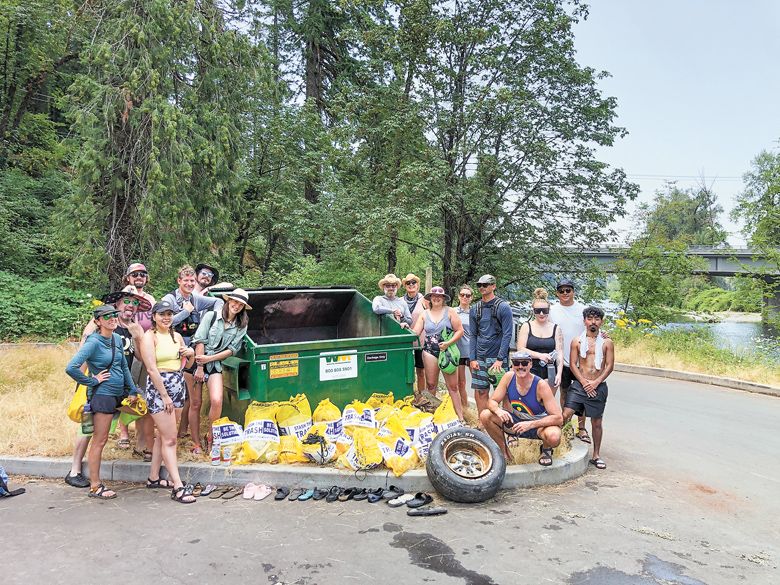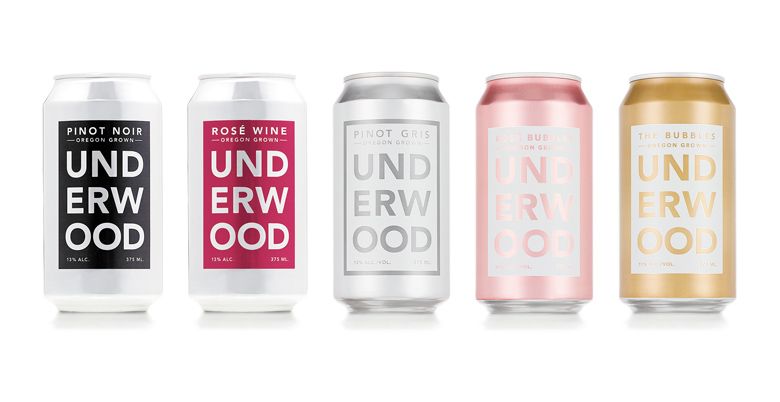Oregon Grown
Union Wine Company crafting state wines without all the fuss





By Greg Norton
The place where a wine is grown and made is woven into its every aspect. Most European wine labels feature the wine’s place of origin– Chablis, Champagne, Rioja, Chianti– frequently omitting the grape varieties altogether. Emphasis focuses instead on the lives and commitments of the people who produced it. Here in Oregon, the state’s natural beauty, climate and the Pacific Northwest way of life reflect the styles of the wine made here. Once experienced, they become indelible.
Ryan Harms had exactly such an unforgettable Oregon experience as an undergraduate pursuing a medical career. Harms fell in love with the state and its wine while working harvest in the late 1990s. “It was a tough vintage, but I treasured every minute of it and… wanted to get back here as soon as I could,” he says.
The self-described “kid from New York” credits Lynn Penner-Ash for hiring him. Less than a decade later, he founded what has become the state's largest winery, Union Wine Company, to craft “great Oregon wines– without all the fuss.” The company’s logo is in the shape of the state’s map with the words “Oregon Grown” emblazoned on every label.
A passion for the region finds expression not only in Union’s wines but also in its commitments to Oregon and the values Oregonians care about.
As a young cellar worker, Harms helped several Oregon wineries craft high-end bottles his friends could not afford. Thus, Union Wine Company unapologetically makes wine that is reasonably priced and widely available. “We see ourselves as Oregon ambassadors providing wine to the people,” says Brad Mayer, Union’s director of marketing and communications. “Oregon is filled with small, high-end producers– that’s the nature of Oregon Pinot Noir. We feel very lucky to be at the ‘democratization’ end of that spectrum.”
Oregon Brand
Union’s extensive distribution and Oregon-focus certainly raise awareness of the state. “Wine lovers throughout the world recognize the quality of Oregon wine,” says Linea Gagliano, director of communications for the Oregon Wine Board. “While Oregon wine makes up about two percent of the market, high consumer interest and critical acclaim have driven demand outside the state up 9 percent. That’s the highest level of national market penetration ever recorded for Oregon.
People are taking note of the quality of our wine; exports have risen a remarkable 65 percent in the last five years.”
Union Wine Company’s best-known products, sold under the Underwood brand, include Pinot Noir, Pinot Gris and rosé, along with sparkling white and rosé wine. As one of the first Oregon wines available in cans as well as bottles, Underwood has grown to be the top seller in the premium can category, according to Nielsen sales data.
Trade group WICresearch reports “canned packaging of wine has seen explosive growth” in recent years. Canned wine and Oregon match in several ways. Lighter in weight than glass bottles, a can of wine is a practical choice for outdoor activities and other settings free of broken glass. The volume of a 375 ml can represents half a standard bottle of wine, so portions are more easily controlled. And aluminum can be infinitely recycled.
According to the Ball Corporation, an emptied beverage can return a store shelf as a new can in as few as 60 days, and 75 percent of all the aluminum ever produced is still in use. That expanded sustainability resonates with Oregonians’ concern for the environment and attractive to younger generations of wine drinkers.
Underwood canned wine, however, is not the entire Union Wine Company story. The winery makes wine under four additional brands. While fruit for Underwood wines is grown throughout the state, the sourcing of grapes for these brands remain part of what makes each distinct:
Kings Ridge was established in 1990 in the Chehalem Mountains AVA and acquired by Harms in 2005 as he founded Union Wine Company. The brand is known for affordable wines produced with fruit from the Willamette Valley appellation.
The small-production Alchemist brand produces Pinot Noir and Chardonnay blended with grapes sourced from selected AVAs within the Willamette Valley.
The Amity brand is Union’s entry into the single-vineyard, premium wine category, reflecting the company’s growing interest in acquiring vineyard property. The site, first planted in the 1970s, lies in the Eola-Amity Hills AVA, and Union Wine Company purchased it in 2014. In addition to estate fruit, grapes originate from other high-quality vineyards in the Eola-Amity Hills and the wider Willamette Valley.
Christopher Michael Wines began in 2009 when Harms’ brother, Eric, joined the company. The name represents a combination of each brother’s middle name. The Oregon-made wine features grapes from both Oregon and Washington.
Oregon Good
Union’s passion appears evident beyond its Oregon-centric wine brands and sustainable packaging. The winery is committed to giving back to our community through extensive partnerships with various nonprofit organizations. “Our company is committed to doing good,” says Harms. “That’s why we partner with local organizations that support our values and extend our reach. Together, we can do so much more. And, as it turns out, similar to drinking wine, it's more fun with friends.”
One such partner is nonprofit SOLVE; their mission (since 1969) is “to bring Oregonians together to improve our environment and build a legacy of stewardship.”
In 2020, SOLVE organized over 12,000 volunteers in the removal of nearly 125,000 pounds of trash from Oregon’s neighborhoods, coast, rivers, parks and forests. Groups of Union Wine employees have participated in river clean-ups and the company became involved in last summer’s Project CARES initiative, a partnership between SOLVE and Portland Metro-based Plaid Pantry convenience stores.
“We are happy to partner with organizations and places that strive to take care of Oregon,” said Meah Kacirek, SOLVE’s communications and operations coordinator. “We love working with Union Wine Company… the fact that they care about the stewardship of environmental practices is just great.”
When a company ships over 400,000 cases of wine annually, packaging is an excellent way to raise awareness– and funding– for nonprofits. Underwood releases limited editions of bottles and cans with artwork drawing attention to the efforts of several groups. As an example, the Nature Conservancy and National Park Foundation, obvious affinities for the Oregon-grown brand featured Pride Rosé, a special label designed by Portland artist Lisa Congdon, distributed last year to raise awareness of the LGBTQ+ community.
“I love the idea that when my art goes on something, like a poster or notebook or wine bottle… it touches so many people that I will never meet,” says Congdon. “And it's even more meaningful when that art sheds light on issues that I care about or are personal to me.” In the coming year, Congdon’s colorful artwork will appear on Underwood cans as well as bottles. She suggested Union donate to nonprofit organization The Venture Out Project. “I am an avid cyclist and do a lot of riding on dirt, outside in the woods,” she says. “Venture Out’s mission is to get queer and transgender folks out on those same trails, hiking, playing and enjoying the outdoors in a safe and inclusive way.”
Union Wine Company’s values and commitments beyond the wine cellar may best be exemplified by its decision to pursue B Corp certification. According to B Lab (the nonprofit network that awards the certification), it is “a designation that a business is meeting high standards of verified performance, accountability and transparency on factors from employee benefits and charitable giving to supply chain practices and input materials.” In 2023, Union Wine Company hopes to join the global community of over 5500 companies, including a handful of Oregon wineries, that have earned this certification. “B Corp status will help us communicate our values and high standards for social and environmental performance to our wholesalers, accounts and consumers,” says Harms.
A glass of wine represents its source: the appellation, climate and vineyard, but also the passions, hopes, values and dreams of the people who produce it. Nowhere is that more true than in Oregon.












